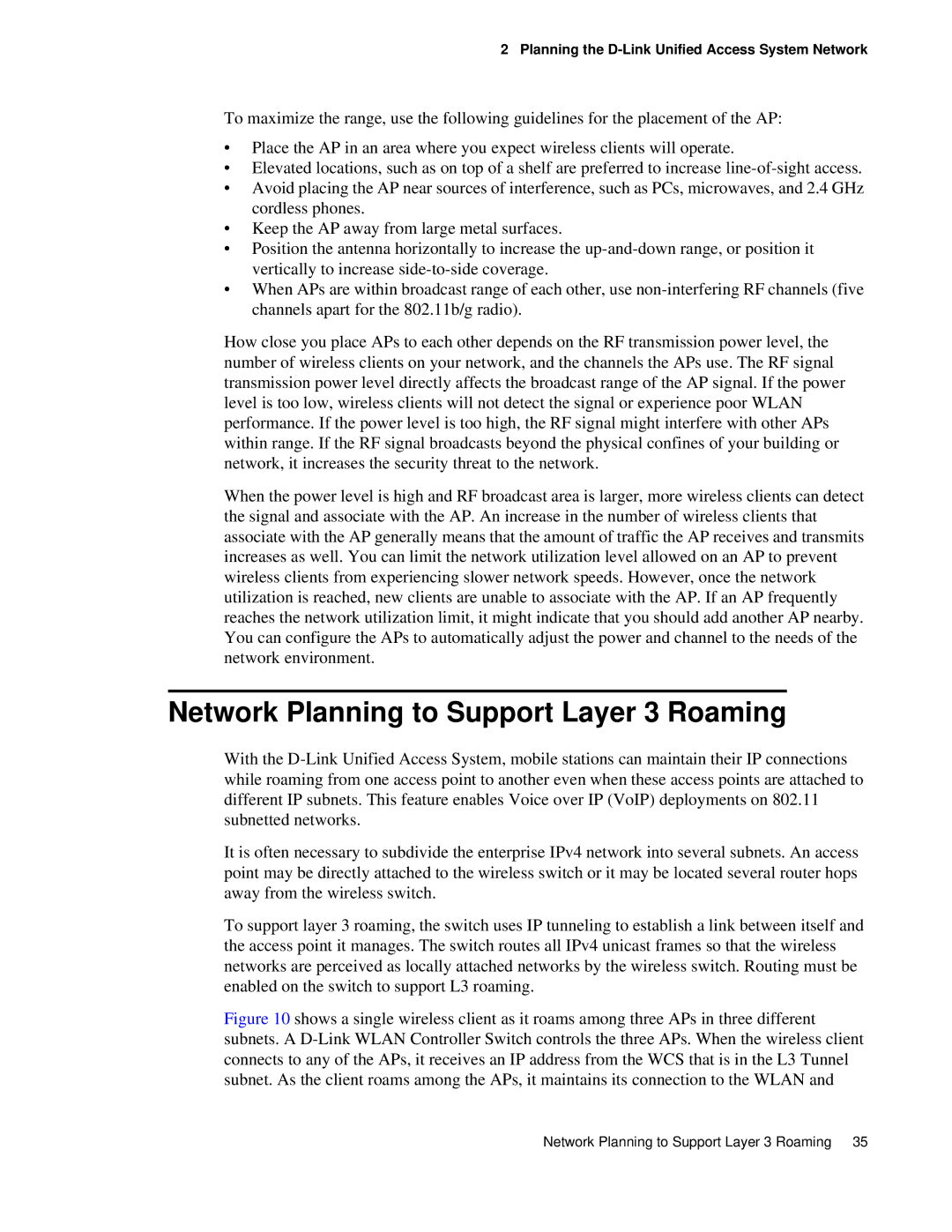2 Planning the
To maximize the range, use the following guidelines for the placement of the AP:
•Place the AP in an area where you expect wireless clients will operate.
•Elevated locations, such as on top of a shelf are preferred to increase
•Avoid placing the AP near sources of interference, such as PCs, microwaves, and 2.4 GHz cordless phones.
•Keep the AP away from large metal surfaces.
•Position the antenna horizontally to increase the
•When APs are within broadcast range of each other, use
How close you place APs to each other depends on the RF transmission power level, the number of wireless clients on your network, and the channels the APs use. The RF signal transmission power level directly affects the broadcast range of the AP signal. If the power level is too low, wireless clients will not detect the signal or experience poor WLAN performance. If the power level is too high, the RF signal might interfere with other APs within range. If the RF signal broadcasts beyond the physical confines of your building or network, it increases the security threat to the network.
When the power level is high and RF broadcast area is larger, more wireless clients can detect the signal and associate with the AP. An increase in the number of wireless clients that associate with the AP generally means that the amount of traffic the AP receives and transmits increases as well. You can limit the network utilization level allowed on an AP to prevent wireless clients from experiencing slower network speeds. However, once the network utilization is reached, new clients are unable to associate with the AP. If an AP frequently reaches the network utilization limit, it might indicate that you should add another AP nearby. You can configure the APs to automatically adjust the power and channel to the needs of the network environment.
Network Planning to Support Layer 3 Roaming
With the
It is often necessary to subdivide the enterprise IPv4 network into several subnets. An access point may be directly attached to the wireless switch or it may be located several router hops away from the wireless switch.
To support layer 3 roaming, the switch uses IP tunneling to establish a link between itself and the access point it manages. The switch routes all IPv4 unicast frames so that the wireless networks are perceived as locally attached networks by the wireless switch. Routing must be enabled on the switch to support L3 roaming.
Figure 10 shows a single wireless client as it roams among three APs in three different subnets. A D-Link WLAN Controller Switch controls the three APs. When the wireless client connects to any of the APs, it receives an IP address from the WCS that is in the L3 Tunnel subnet. As the client roams among the APs, it maintains its connection to the WLAN and
Network Planning to Support Layer 3 Roaming 35
